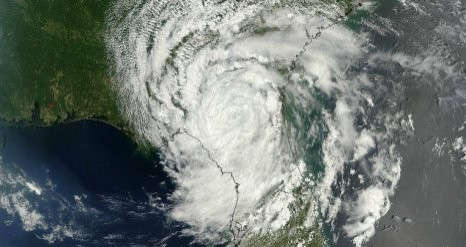Hurricane Season 2012: Predictions of a 'Near-Normal' Season, But Authorities Say Prepare For The Worst

Hurricane season kicked off on Friday, with forecasters calling for a 2012 on par with the past three decades. But they also warned of complacency, suggesting Atlantic coast residents take all the proper precautions.
The National Oceanic and Atmospheric Administration called for a near-normal hurricane season from its laboratory in Miami, Florida.
For the entire six-month season, NOAA's Climate Prediction Center forecast a 70 percent chance of nine to 15 named storms, which have winds of 39 mph or higher, four to eight of which will gain enough strength to become hurricanes, with winds of 74 mph or higher, with a chance that one to three will be major hurricanes of at least a category 3 ranking.
The numbers fall in line with the Atlantic region's average of 12 named storms per season since 1981.
NOAA's outlook predicts a less active season compared to recent years, said NOAA administrator Jane Lubchenco. But regardless of the outlook, it's vital for anyone living or vacationing in hurricane-prone locations to be prepared. We have a stark reminder this year with the 20th anniversary of Hurricane Andrew.
The tepid prediction for the season underlies the importance for preparedness; a low number of storms does not translate into tamer weather.
The current state of the Atlantic's Main Development Region, an area that includes the tropical Atlantic Ocean and Caribbean Sea and acts as a sort of meteorological incubator for tropical storms and hurricanes, led NOAA to conclude all factors end in a wash.
The sea-surface temperatures are in line with a trend that began in 1995 and produced some devastating storms. But a strong wind shear and cooler waters in the Eastern Atlantic could stymie a storm's initial growth. The large X factor, El Nino, could also put a damper on hurricane season if develops by late summer.
Colorado State University also released its annual Hurricane forecast on Friday, which called for a total of 13 named storms, five hurricanes, two of which will be major.
NOAA rounded off National Hurricane Preparedness Week on Friday, which includes a checklist to prep for the coming season. As always, assume the worst.
© Copyright IBTimes 2024. All rights reserved.





















